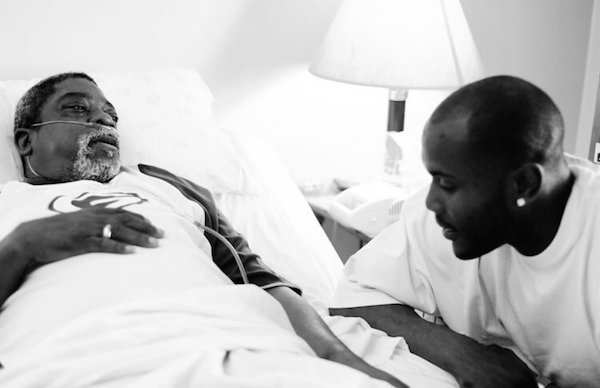[A]frican Americans at the end of life have significantly higher rates of hospital admission, emergency department (ED) visits, and discontinuing (also known as disenrolling from) hospice care than whites, according to a new study by researchers at the Icahn School of Medicine at Mount Sinai published today by the Journal of the American Geriatrics Society.
Researchers examined whether race played a factor in rates of hospitalization, ED visits, and disenrollment from hospice. Although previous studies have found that African American patients have higher rates of hospitalization after enrolling in hospice than white patients, it was unknown if racial differences were linked to other differences in outcomes in hospice care, whether administered in an acute hospital setting or ambulatory setting, and if race plays a significant role in end-of-life care.
“While differences exist between hospice organizations in how frequently their patients are hospitalized, including time in the emergency room, and disenrollment from hospice, these patterns do not explain racial disparities between blacks and whites in hospital use and hospice disenrollment,” says Melissa Aldridge, PhD, MBA, Associate Professor and Vice Chair for Research in Geriatrics and Palliative Medicine at the Icahn School of Medicine at Mount Sinai.
Dr. Aldridge and her collaborator, Jessica Rizzuto, MPP, a student at the Icahn School of Medicine, used data from a longitudinal cohort study of Medicare beneficiaries enrolled in a national random sample of 577 hospices around the country from the National Hospice Survey from patients in active treatment until death (2009-2010). The national sample of 145,000 Medicare beneficiaries who had enrolled in these hospices at the end of life was composed of about 92 percent white patients and 8 percent black patients. Half of the hospices were for profit, and 25 percent were members of a chain of hospices. Approximately 90 percent of the patients in the study were served by hospices in an urban area. Researchers estimated the proportion of each hospice’s patients who experienced the following utilization-based outcomes from the time of their hospice enrollment to their death: one or more hospitalizations, one or more ED visits, and hospice disenrollment. They compared the unadjusted proportion of black versus white hospice enrollees with each of these outcomes.
“We found that black hospice patients were significantly more likely than white hospice patients to be admitted to the hospital (14.9 percent vs 8.7 percent), to go to the emergency room (19.8 percent vs. 13.5 percent), and to disenroll from hospice prior to death (18.1 percent vs. 13.0 percent). These patterns remained after accounting for patient illness, demographics, and type of hospice from which these patients received care,” Aldridge says. “These higher rates of emergency department use, hospital admission, and hospice disenrollment by blacks compared with whites were attributable to racial differences within hospices rather than systemic differences between hospices in these outcomes.”
The role of a hospice is to enable individuals to remain at home during the terminal phase of their illness while receiving support, pain and symptom management, and counseling for themselves and their families. These findings matter, researchers say, because higher-intensity care at the end of life may adversely impact the quality of life of hospice enrollees and their families and increase the burden on caregivers.
The data did not allow investigators to identify the reasons for hospital use and hospice disenrollment, but they said these could occur for a number of reasons, including patient and family preferences for care, patient and provider communication about the role of hospice care, availability of resources, and caregiver burnout.
Researchers say more information is needed on hospice outcomes for patients of other races, as less is known about Asian, Pacific Islander, or Native American patients.
“Our findings underscore the need to better understand racial disparities in outcomes after hospice enrollment,” says Dr. Aldridge. “Culturally sensitive interventions that increase understanding of hospice, address shortcomings in provider communication, and improve caregiver resources could help decrease these persistent differences in outcomes.”
Complete Article ↪HERE↩!

